The rush to claim the powerful new Nvidia RTX 30 Series GPUs has been hectic news, no doubt. However, now that the cards have begun to reach the hands of consumers, stability issues with the new tech have become apparent. Users have reported crash to desktop (CTD) cases among more bizarre issues like white lines appearing on screens while the cards are under load. While not all of the cards are experiencing issues, it seems like more than enough have been reported. The negative news has also led several companies to make public statements in regards to the issues.
Online discussions as well investigative reporting performed by Igor’s Lab led to a general conclusion that the issues were related to incorrect capacitor configurations on select AIB cards. The report pointed out that the Nvidia reference cards featured a specific capacitor configuration that called for a mix of both larger POSCAP capacitors and smaller MLCC capacitors. However, when AIB models were examined, it was found that some only had POSCAPs or a different ratio of POSCAP/MLCC than the reference models.
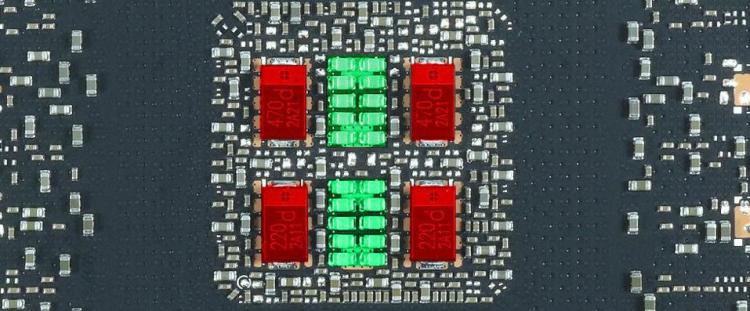
As seen here, the 4 POSCAP/2×10 MLCC design is utilized on the Nvidia Founder’s Edition board (credit: Igor’s Lab).
Furthermore, it was noted that the issues occurred while cards were under load at around 2 GHz boost. This consistent characteristic led other media authorities like JayzTwoCents to suggest that power interference was the source of the issue. Generally speaking, the POSCAPs are cheaper than the MLCC arrays, and may have be creating lower quality power which introduces “noise” into the GPU calculations. MLCC-style capacitors are designed to provide cleaner power, but at a cost. Therefore, this issue could be a result of some manufacturers opting for all-POSCAP/POSCAP-favoring designs.
Differing designs
Interestingly enough, there seems to be a lot of variance between the configurations that different manufacturers opted for. For instance, Zotac and Gigabyte feature all-POSCAP designs while most other manufactures have varying mixed combinations. In the case of ASUS, it actually has an all-MLCC design.
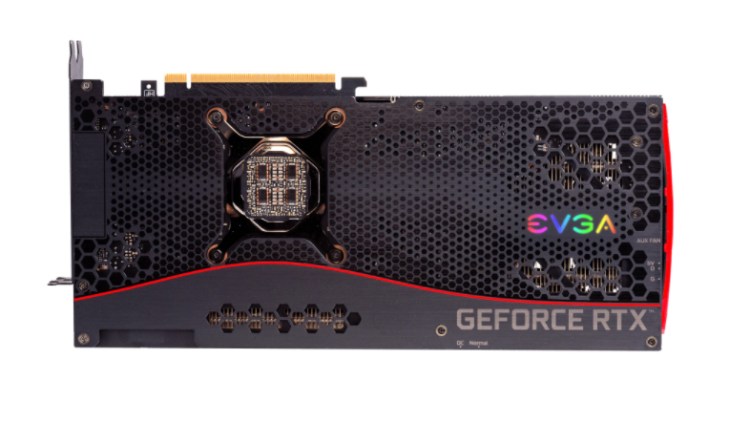
Observe the four large POSCAP capacitors along with the MLCC clusters in the middle (image credit: EVGA).
Setting fears aside
It took a few days after the investigative reports came out, but EVGA was the first AIB to acknowledge the issue. Its review samples featured the all-POSCAP design and performed accordingly. This caused a degree of concern among customers, as the EVGA brand is known for meticulous quality. Company spokesperson Jacob Freeman addressed the situation on the company’s forums and assured customers that its cards were problem-free though.
“During our mass production QC testing we discovered a full 6 POSCAPs solution cannot pass the real world applications testing. It took almost a week of R&D effort to find the cause and reduce the POSCAPs to 4 and add 20 MLCC caps,” said Freeman.
EVGA has since reached out to collect and replace the all-POSCAP cards that reviewers received. Freeman also attributed EVGA’s launch delay to the correction of this issue. Therefore, it seems safe to say that anyone with these cards won’t see the stability issues of concern.
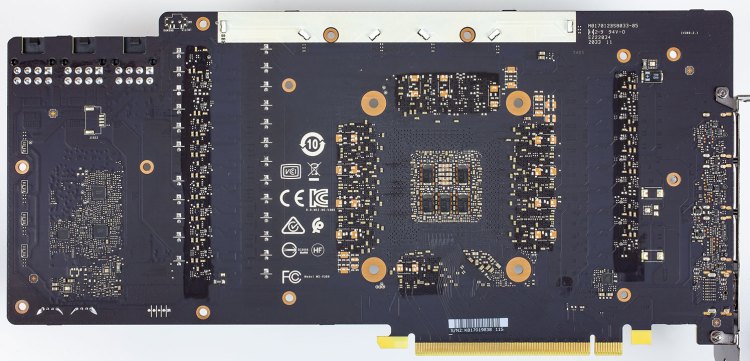
MSI’s powerful overclocked Gaming X Trio variant features a 5:10 capacitor ratio (image credit: TechPowerUp).
Digging in
Unlike EVGA however, some of the AIBs are still silent on the matter. A few have even suggested that there is no problem with the use of more than four POSCAP capacitors. This is without a doubt creating a degree of confusion among consumers, but here’s what else has been said so far.
Nvidia itself is still silent on the matter. We expect it’s doing something behind the scenes, if at least only communicating with the AIBs. Inno3D, however, uses five POSCAPs and 10 MLCCs and believes its products to be fine. Galax features a 5:10 ratio on its 3080s and then 4:20 on the 3090 variants. It too asserts that all of its cards perform properly, despite the modifications from the reference card design.
Zotac tells a different story though, and with good reason, as it features all POSCAP capacitors. As of now, the company is working on a solution with Nvidia.
The rest of the AIBs have yet to comment, but customer photos have proven that they too feature mixed designs which call in to question the true performance and longevity of RTX 30 series cards.
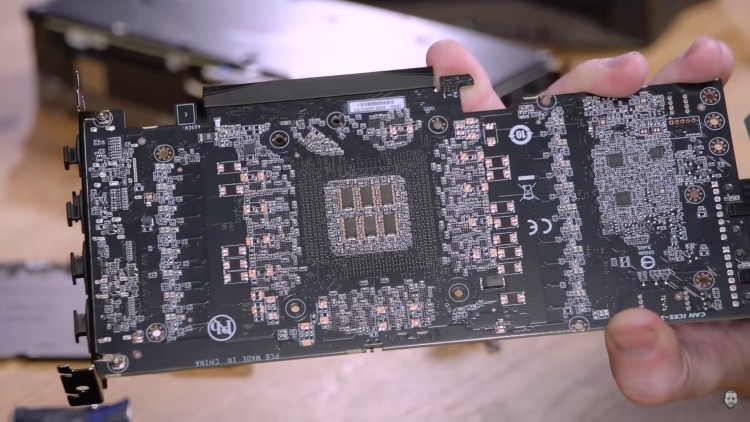
All of Gigabyte’s models appear to feature all-POSCAP designs. The company has failed to comment on this yet (image credit: JayzTwoCents).
Is the problem as simple as capacitors?
It’s hard to say whether the capacitors are solely responsible for the issues. Technical issues are common for all new technologies, and the Nvidia RTX 30 Series is no different. However, it seems unlikely that any of the AIBs would knowingly limit the capabilities of the new products to save a little money. We know that not all of the all-POSCAP designs are having issues, which could suggest that the capacitors themselves are defective rather than inadequate. Likewise, a firmware or driver update could potentially help to remedy some of the instability issues. Nvidia coincidentally released a new driver update today.
One thing is for certain though. The GPU market is incredibly competitive, so none of the AIBs can afford ongoing bad publicity. The Nvidia RTX 30 Series is shaping up to be one of the strongest GPU launches in history. The potential for missed sales should be more than enough incentive to generate a speedy and decisive resolution for the instability issues. This story is still developing.

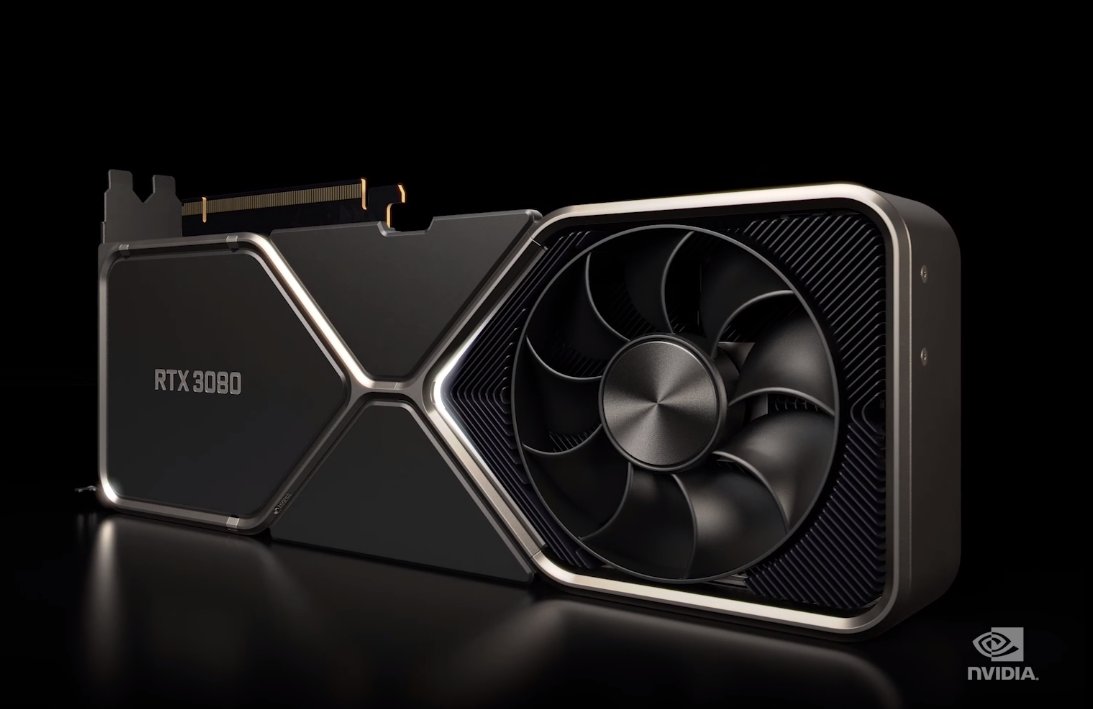





Published: Sep 28, 2020 05:30 pm